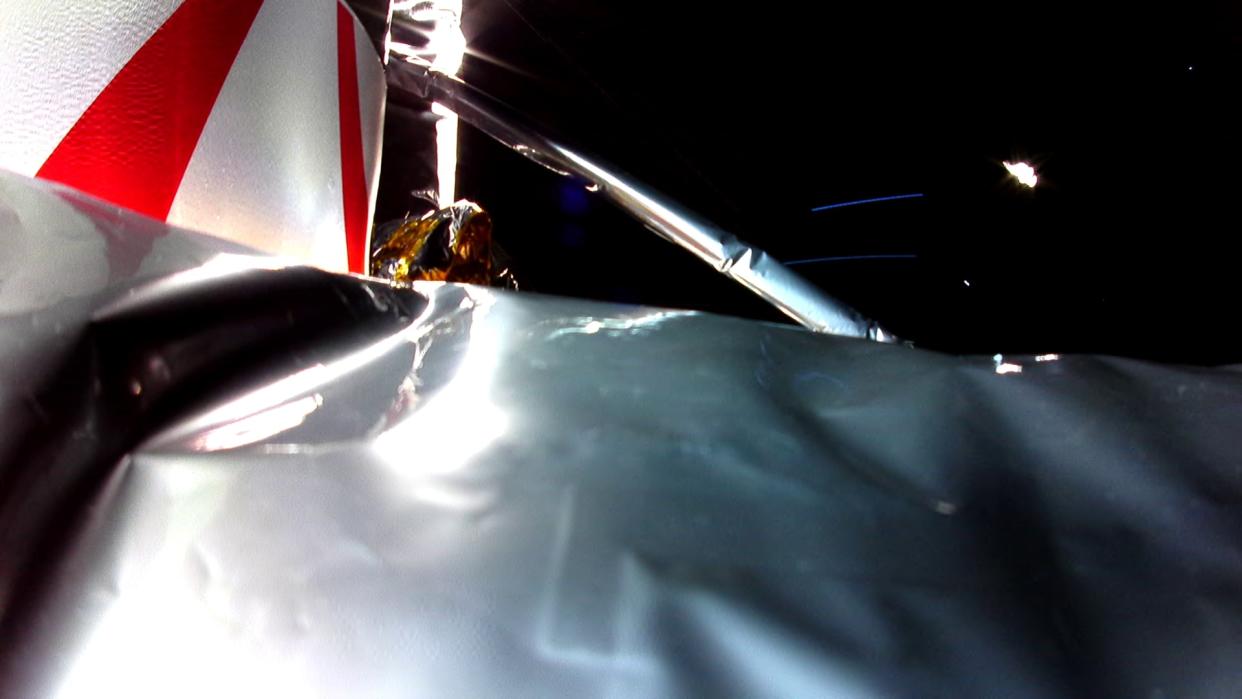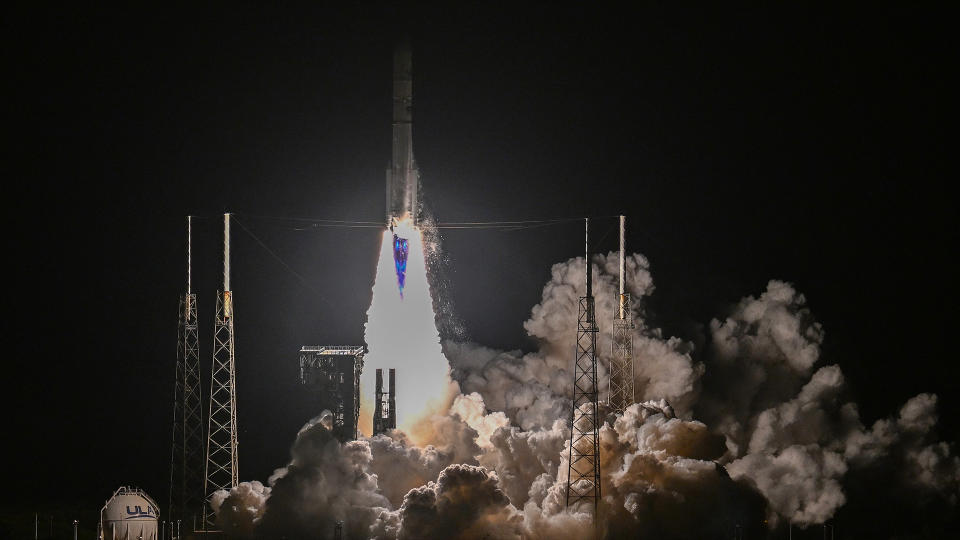Failed Peregrine lunar lander carrying human remains will crash into Earth by Thursday (Jan. 18)

The controversial Peregrine lunar lander, which swiftly failed in its mission to reach the moon after launching last week, will be deliberately crashed into Earth's atmosphere by Thursday (Jan. 18). The doomed spacecraft will most likely burn up in our planet's upper atmosphere without reaching the planet’s surface.
The Peregrine lander was created by the private Pittsburgh-based space company Astrobotic Technology and launched into space on board United Launch Alliances' brand-new Vulcan Centaur rocket, which blasted off from the Cape Canaveral Space Force Station on Jan. 8.
Once in space, the lander was supposed to follow a complex orbital trajectory that would slingshot it toward the moon, where it was scheduled to land in late February. If all went to plan, Peregrine would have become the first commercial lander on the moon and the first U.S. spacecraft to reach the lunar surface since the Apollo 17 mission in 1972.
The mission was strongly condemned by the Navajo Nation before launch because the lander was carrying payloads from memorial spaceflight companies that contained human remains and DNA. Navajo Nation President Buu Nygren wrote in an open letter to NASA that landing human remains on the moon was "tantamount to desecration of this sacred space."
Around six hours after launch, Astrobotic announced that the lander, which had successfully separated from the rocket, had encountered several anomalies, which included a critical propellant leak that essentially left the spacecraft dead in the water (or space). After searching for solutions, the company later admitted that the lander would never reach the lunar surface.
Related: 15 of the weirdest things we have launched into space

On Saturday (Jan. 13), Astrobotic wrote on X (formerly known as Twitter) that the lander is on a collision course with Earth. Subsequent tests revealed that the spacecraft could still be maneuvered slightly, meaning this fate could be avoided. However, after consulting with NASA and the U.S. government, Astrobotic announced on Sunday (Jan. 14) that they would allow Peregrine to crash into Earth's upper atmosphere.
Astrobotic has not revealed exactly when or where the lander will enter Earth's atmosphere but noted the mission will be finished by Thursday.
"We do not believe Peregrine’s re-entry poses safety risks, and the spacecraft will burn up in Earth’s atmosphere," Astrobotic representatives wrote in the statement. In the past, parts of other doomed spacecraft such as defunct return capsules and uncontrollable falling rocket boosters have been known to reach and collide with Earth's surface.
Astrobotic decided to crash the lander to prevent leaving highly disruptive space junk in cislunar space — the space between Earth and the moon's orbit.
related stories
—Geomagnetic storm sends 40 SpaceX satellites plummeting to Earth
—Out-of-control defunct NASA satellite will smash into Earth
—Big hunk of failed Russian rocket crashes to Earth as space junk
However, the lander's death spiral could still cause some environmental issues. In October last year, scientists revealed that space junk burning up in Earth's atmosphere was causing high levels of metal pollution that are impacting our skies in ways we don't fully understand.
Despite the total and almost immediate failure of the Peregrine's trip to the moon, Astrobotic still considers the mission to be a success, partly because equipment on the lander was still able to collect some data from Earth orbit but mainly because it will help the company avoid similar mistakes in the future.
"This mission has already taught us so much and has given me great confidence that our next mission to the moon will achieve a soft landing [on the moon]," Astrobotic CEO John Thornton said in the statement.

